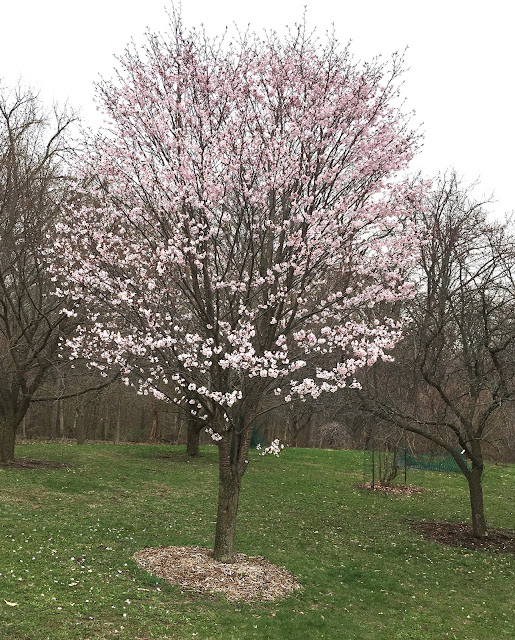THPRING
I first encountered this poem over 30 years ago in a print publication called The Insomniac (March 1989), where the citation was to a book called Llovable Lloyd's Poems. It appeared not to have been stored anywhere on the internet - at least not at any site searchable by Google (and with search terms like mythia/withia/kythia it shouldn't have been hard to locate), so I posted it to TYWKIWDBI in 2009.A time of forsythiaWhen people mythiaAnd want to be wythiaAnd maybe kythia
Reposting today because I hiked the University of Wisconsin Arboretum yesterday and was pleased to see the forsythia putting on its typical first-of-the-spring floral show. Otherwise there were few plants in bloom:
As I was preparing to leave, I was startled to notice that the cars in the parking lot were "socially distanced":
Nine cars parked in alternate spots only (extending beyond the field of view). The arboretum has cancelled all indoor events and closed the visitor center, and has issued coronavirus guidelines which basically consist of commonsense social distancing on hiking trails. There has been no call for visitors to park their vehicles 12 feet apart (and the distribution shown is not a normal pattern, because visitors typically cluster their vehicles at the entry points for paths and walkways). I've seen this pattern in parking areas near carryout food sites, and suspect it represents typical midwestern commonsense behavior.








































